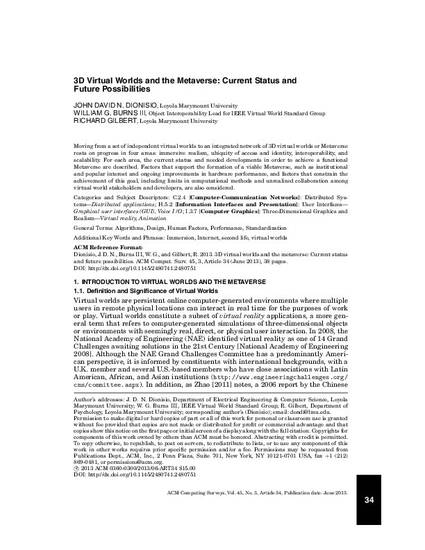
Moving from a set of independent virtual worlds to an integrated network of 3D virtual worlds or Metaverse rests on progress in four areas: immersive realism, ubiquity of access and identity, interoperability, and scalability. For each area, the current status and needed developments in order to achieve a functional Metaverse are described. Factors that support the formation of a viable Metaverse, such as institutional and popular interest and ongoing improvements in hardware performance, and factors that constrain the achievement of this goal, including limits in computational methods and unrealized collaboration among virtual world stakeholders and developers, are also considered.
© ACM, 2013. This is the author's version of the work. It is posted here by permission of ACM for your personal use. Not for redistribution. The definitive version was published in ACM Computing Surveys, 45, 3, (June 2013). http://dx.doi.org/10.1145/2480741.2480751
Dionisio, J. D. N., Burns III,W. G., and Gilbert, R. 2013. 3D virtual worlds and the metaverse: Current status and future possibilities. ACM Computing Surveys 45, 3, Article 34 (June 2013), 38 pages. DOI: http://dx.doi.org/10.1145/2480741.2480751
